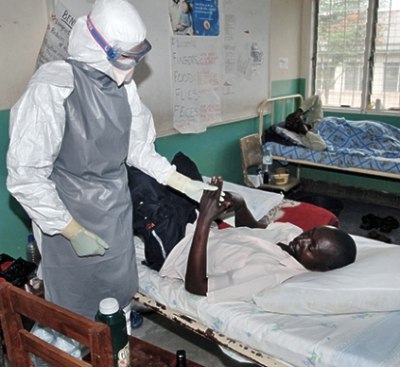
The Ebola epidemic in West Africa, already ghastly, could get worse by orders of magnitude, killing hundreds of thousands of people and embedding itself in the human population for years to come, according to two worst-case scenarios from scientists studying the historic outbreak.
The virus could potentially infect 1.4 million people in Liberia and Sierra Leone by the end of January, according to a statistical forecast by the U.S. Centers for Disease Control and Prevention published Tuesday. That number came just hours after a report in the New England Journal of Medicine warned that the epidemic might never be fully controlled and that the virus could become endemic, crippling civic life in the affected countries and presenting an ongoing threat of spreading elsewhere.
These dire scenarios from highly respected medical sources were framed, however, by optimism from U.S. officials that an accelerated response can and will contain the outbreak in the weeks and months ahead.
CDC Director Tom Frieden cautioned that the estimates in the new report from his agency do not take into account the actions taken, or planned, since August by the United States and the international community. Help is on the way, and it will make a difference, he said — but time is of the essence.
“A surge now can break the back of the epidemic, but delay is extremely costly,” Frieden said.
The situation in West Africa is bleak, with people dying of Ebolain the streets outside clinics that have no available beds, and other victims remaining at home where they are infecting their caregivers. No Ebola outbreak has ever approached the scale of the present epidemic. The previous worst outbreak, in Central Africa, involved only 425 infections in Uganda from October 2000 to January 2001, and was brought under control by local responders aided by international organizations, according to the New England Journal of Medicine.
The World Health Organization has reported more than 5,800 cases, including more than 2,800 deaths in the current outbreak. The CDC assumes the actual number of cases is 2.5 times higher than what is officially known.
I am not sure the Nigerian government has this info
ReplyDeleteMeaning?
DeleteIt's well.
ReplyDelete